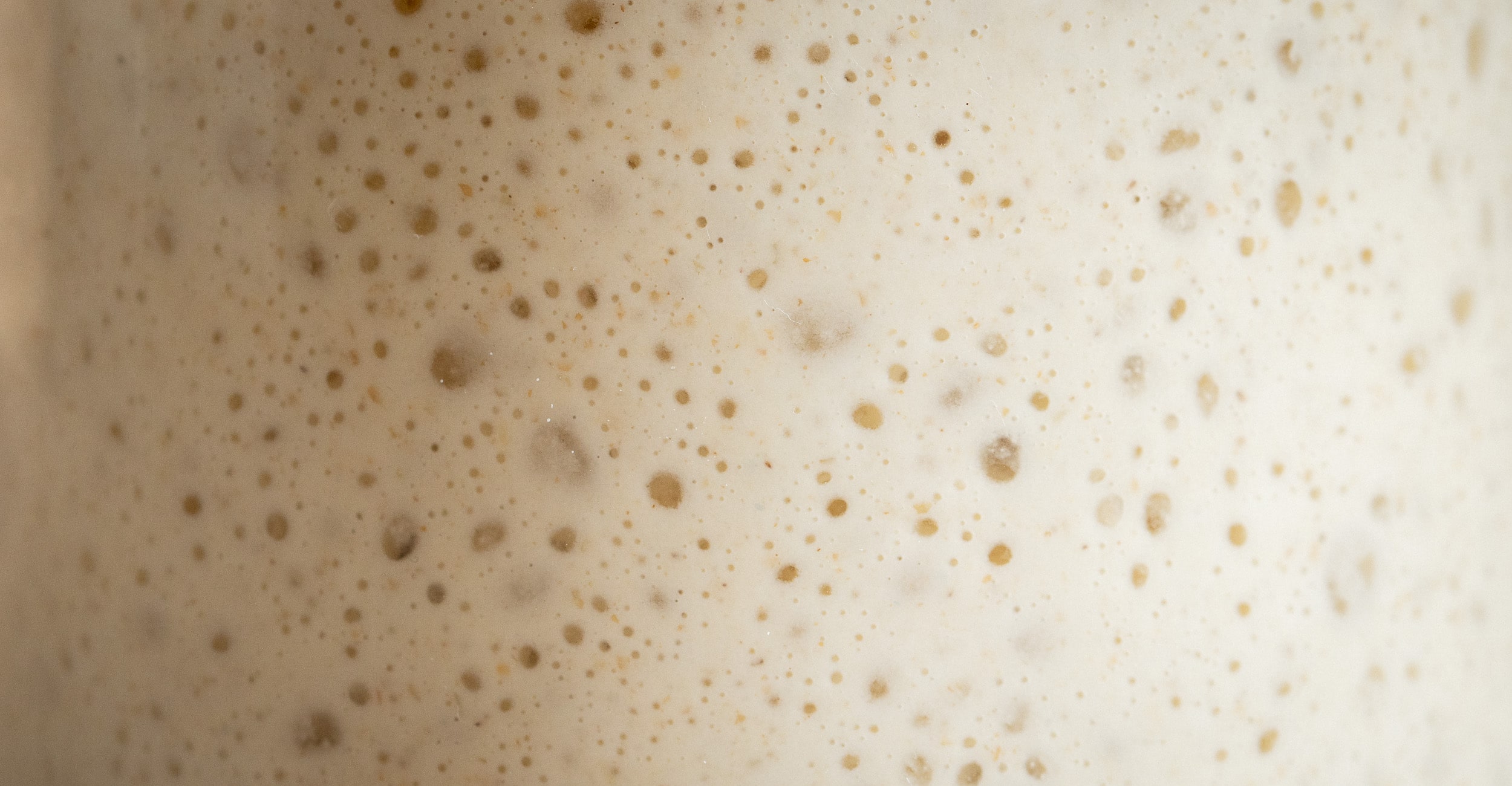
Ah, the mysterious Sourdough Starter — what is it anyway? We’re here to help you understand everything you need to know about creating, maintaining and storing starters. It’s important to understander starters, and the role they play as the leavening agent in bread. A healthy starter is your first step to becoming a sourdough master.
Please email us at techniques@challengerbreadware.com with your comments and questions.
A Sourdough Starter (or just a Starter) is a mixture of flour and water that’s been left to ferment. There are natural, wild yeasts, bacteria, and microbes that are present in your flour, in the air of your kitchen, and even on your countertop. These are harnessed by the baker over a period of time to make a natural leaven that can be used to create sourdough or naturally leavened bread and pastries. Just like baker’s yeast, a Starter is just another form of leavening.
Until the invention of baker’s yeast in the 19th century, all breads were sourdough breads. Bread (sourdough bread) is the basis of cultures all over the world, and it’s eaten with most meals.
As a baker, you have control over the flavor of your bread. You can make it mild or tangy and sour. In the United States, San Francisco Sourdough has always been sour. Most bakers today tend to bake breads that lean toward the mild side, not the sour side.
Sourdough bread has more flavor than bread made with baker’s yeast because baker’s yeast only has one single type of yeast: Saccharomyces cerevisiae. Your starter will contain several types of wild yeasts and Lactic Acid Bacteria (homofermentative and heterofermentative LAB if you want to get scientific), and these come from your flour and your environment. This makes your starter different and unique from everyone else’s starter.

The main reason that bakers make bread with starters instead of baker’s yeast is depth of flavor. Although sourdough breads ferment longer than breads made with baker’s yeast, they’re really a little easier to fit into your schedule because the fermentation window of when a sourdough dough is ready to be used is a lot larger than dough made with baker’s yeast.
Sourdough bread also has a longer shelf life than bread made with baker’s yeast. It does not stale as quickly. Sourdough bread can easily last 2-3 days on your counter, and many bakers prefer the taste and crunch as it gets older.
There are many reasons that bakers don’t use a starter. The main reason is that starters take time and maintenance. There is also discard when you maintain a starter and some bakers don’t like the waste. However, there are many recipes that can be made with the discard so that you don’t have to throw it away. You can’t just whip up a starter one day if you want to make bread, but you could use some baker’s yeast that’s sitting on your shelf or in your freezer. In addition, you have to remember that starters are living, so they need some space in your kitchen or pantry.
Don’t let a sourdough baker make you feel like less of a baker if you use commercial yeast. Even our founder, Jim, used to think that baker’s yeast is cheating. It’s not. There are many reasons and many great breads and other baked goods that can be made with baker’s yeast. It’s just a baker’s choice on what he or she wants to bake.
Around the world, this mixture of fermented flour and water goes by many names. The French term levain is probably the most popular and recognized name. It is also sometimes called The Mother, The Mama, or The Chef.
Here, we’re going to use the term Starter to mean the mixture in your jar that you feed on a regular basis. Your Starter can be used directly from the jar to leaven your bread. Oftentimes bakers put a portion of the Starter into another jar to make a levain, and it’s this levain that will be used to leaven the dough for a loaf of bread.

There are also many different types of starters used when making bread:
Liquid Levain: Equal parts flour and water also known as a 100% hydration starter. A liquid levain can be used to give you a tangier flavor in your bread. This is the type of starter that we’ll be discussing here. It’s the easiest one to make, and it’s the one that’s used by most home and professional bakers.
Stiff Levain: More flour than water. A stiff levain will tend to give you a milder flavor in your bread.
Sweet Levain: Contains sugar as is used mainly when making enriched doughs. The addition of sugar encourages different yeasts that survive and thrive better in enriched doughs.
Lievito Madre: Another name for a stiff levain and frequently used when making panettone.
Be the first to know! We’ll send out emails with new products and promotions — as well as recipes and baking tips.
Necessary cookies are absolutely essential for the website to function properly. This category only includes cookies that ensures basic functionalities and security features of the website. These cookies do not store any personal information.
Any cookies that may not be particularly necessary for the website to function and is used specifically to collect user personal data via analytics, ads, other embedded contents are termed as non-necessary cookies. It is mandatory to procure user consent prior to running these cookies on your website.